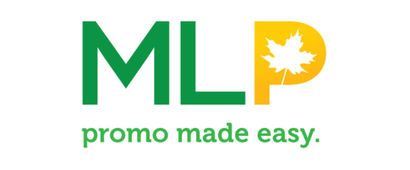Your Cart is Empty
-
- Calendars

-
Wall Calendars
- Patriotic Wall Calendars
- American Scenic Wall Calendars
- Canadian Scenic Wall Calendars
- World Scenic Wall Calendars
- Cars, Trucks And Bikes Wall Calendars
- Wildlife Wall Calendars
- Art Wall Calendars
- Inspirational & Motivational Wall Calendars
- Food & Beverage Wall Calendars
- Health & Wellness Wall Calendars
- Home And Gardens
- Desk Calendars
- Magnet Calendars
-
- Writing Tools

- Headwear

- Drinkware

-
Mugs
- Water Bottles
-
Glassware
-
Plastic
- Can Coolers & Koozies
-
- Clearance

-
Behind the Scenes: Pad Printing
Posted on October 07, 2022 Posted in Keychains Promotional Products Travel
A Reliable Imprint Method Used To Personalize 3D Items

Pad printing, also known as tampography, is one of the most reliable imprint methods that can be used to personalize 3D items. It’s a simple process that produces fantastic-looking results on otherwise hard-to-decorate materials. Let’s take a brief look at what pad printing is and when it is used.
What is Pad Printing?
When thinking about pad printing, it can be helpful to think about how we use an everyday rubber stamp. When you use a stamp, you press the etched rubber image down into a squishy ink pad, which covers the stamp in wet ink. Pressing the wet stamp down onto the paper will result in the transfer of the etched image onto the paper. Pad printing works similarly, but it involves specialized equipment, and you can use pad printing to imprint so much more than just a piece of paper.
Much like a regular stamp, we start the pad-printing process with an etched image that will be filled with ink. The pad printing plate, or cliché, features our etched design. This etched plate is usually created using laser engraving (see our article on laser engraving here). A closed ink cup sits above the plate and fills it in with ink.
Next, the ink cup moves away from the pad printing plate, and any excess ink sitting outside the engraved grooves of the design is scraped away. This ensures that the final imprint will look clean and precise. The pad-printing ink is unique because once it is exposed to air, it develops a very sticky surface. This is what enables the ink to easily stick to the transfer pad, and later, to a wide range of surface materials.
At this point, the transfer pad is pressed onto the printing plate where it picks up most of the ink. The pad moves away from the plate, and the ink cup returns to refill it for the next round of printing.
In the meantime, the pad is pressed onto the product, transferring the layer of ink it picked up from the plate onto the item. The sponge-like quality of the pad means that it is highly adaptable to different shapes, and can be used to personalize balls, pens, and many other oddly shaped items.
When is Pad Printing Used?
The main benefit of pad printing is that it can be used in situations where other printing methods would simply not work. Many imprinting techniques require a flat surface, which limits the scope of their capabilities. Even screen printing, which can be successfully used on rounded objects, is not capable of decorating unevenly rounded or unusually shaped products. Pad printing is also safe to use on a wide variety of materials such as glass, plastic, ceramic, and more, making it a versatile tool that can be used in many different printing situations. Because of its ability to decorate a wide range of shapes, textures, and materials, pad printing is the go-to method for printing atypical items like stress balls, toys, golf balls, sunglasses, and much more!
Recent Posts
- Oh Baby! Accessories and Apparel for your Littlest Customers
- Promo for the Generations: How to Connect with Gen X Through Promotional Products
- Driving Brand Awareness: Top Promotional Products for Cars, Bikes, and Beyond
- Beyond the Basics: Unique Apparel to Suit Your Style
- Promo for Baby Boomers: Best Promotional Products for This Generation
- Recognizing Educators: A+ Gifts for Teacher Appreciation Week
- Low Tech, High Impact: Our Product Picks for the Global Day of Unplugging
- Finding the Perfect Gift: What Do You Give to Someone Who Has Everything?
- Exciting New Arrivals: Three New Products We Know You'll Love
- The Sky Is The Limit!
Categories
promo products made easy.

















